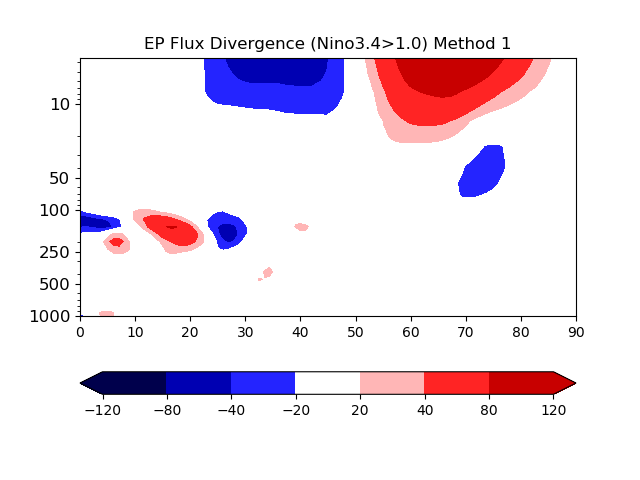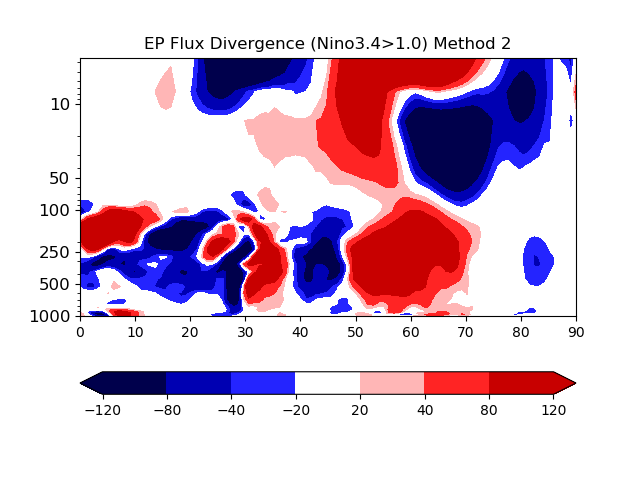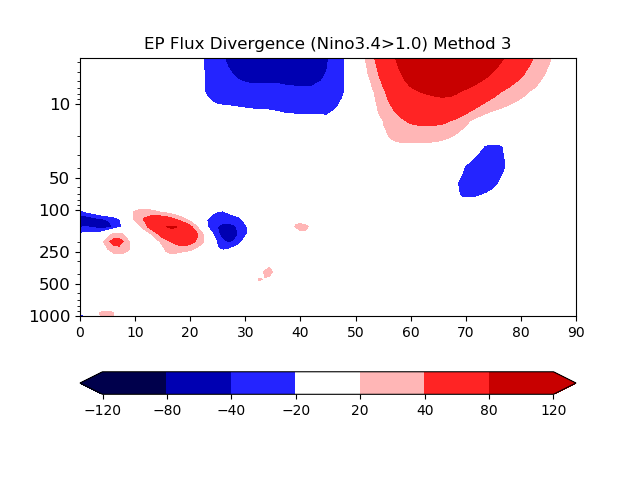


Investigating Wave Flux Out of the Tropics in CESM-LE vs AMIP-TOGA
[from AMO report]
Next steps
Below are a few ideas for exploring this further and explaining the discrepancies between AMIP-TOGA and CESM-LE.
(1) Examine Eliassen-Palm flux to determine if there is a difference in wave flux between CESM-LE and AMIP-TOGA. There likely will be, because a stronger polar vortex refracts wave, but it’s worth calculating the wave flux out of the equatorial regions in both models. If it’s lower in AMIP-TOGA despite warmer tropical SSTs, then that is the fundamental reason why AMIP-TOGA has a +ENSO/+NAO. The next step is figuring out WHY wave activity isn’t getting to the poles in AMIP-TOGA.
We examine the Eliassen Palm flux divergence near the equatorial region to understand the differences in JFM North Atlantic region circulation patterns between CESM-LE and AMIP-TOGA.
Steps: (1) Create EP
flux files
(2) Calculate EP flux divergence
(3) Compare EP
flux divergence in equatorial Pacific in CESM-LE compared to
AMIP-TOGA.
First, to understand EP flux, I create composites during El Niño.
Testing out three methods: (1) uses old composite method using two different functions, (2) tests out potentially easy python function, (3) tests out brand new function I created.
|
|
|
|
Composites of different metrics in Eliassen-Palm flux script for an El Niño composite:
|
|
|
|
|
|
|
|
|
|
|
|